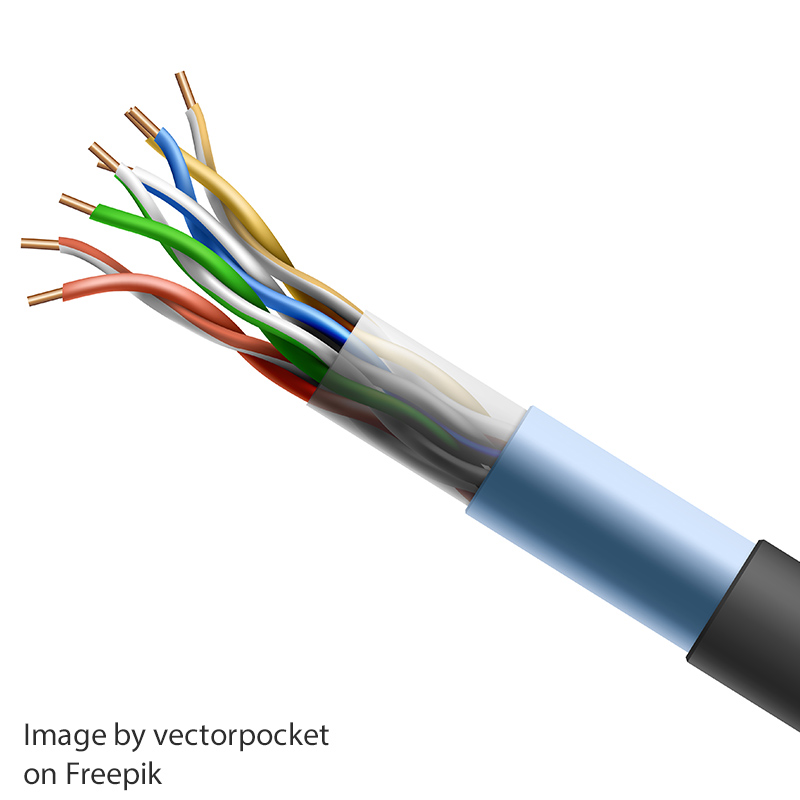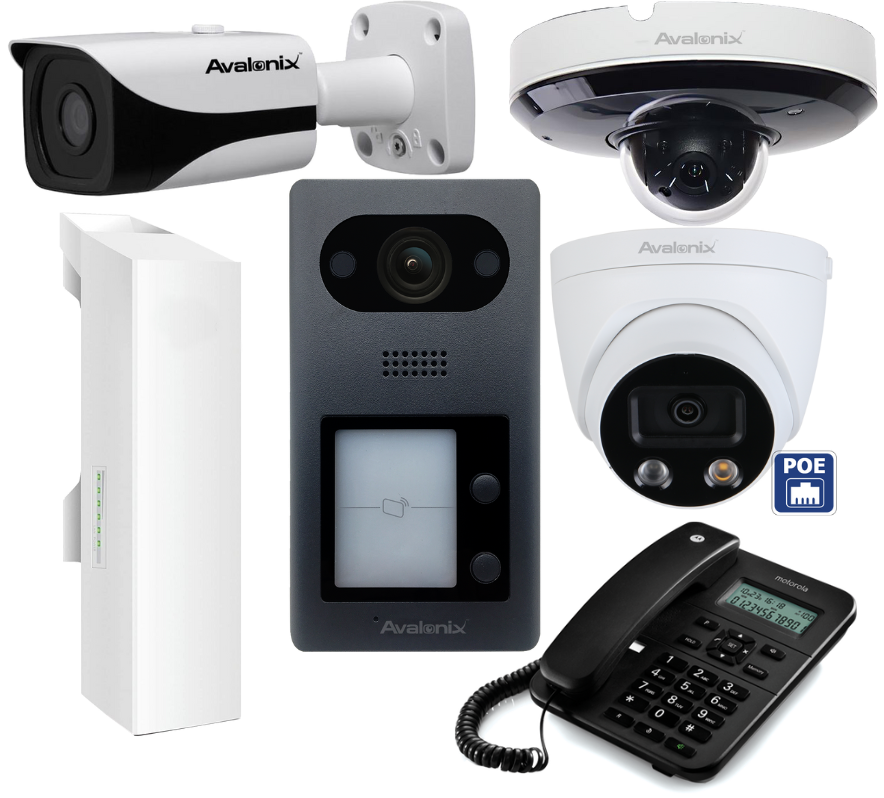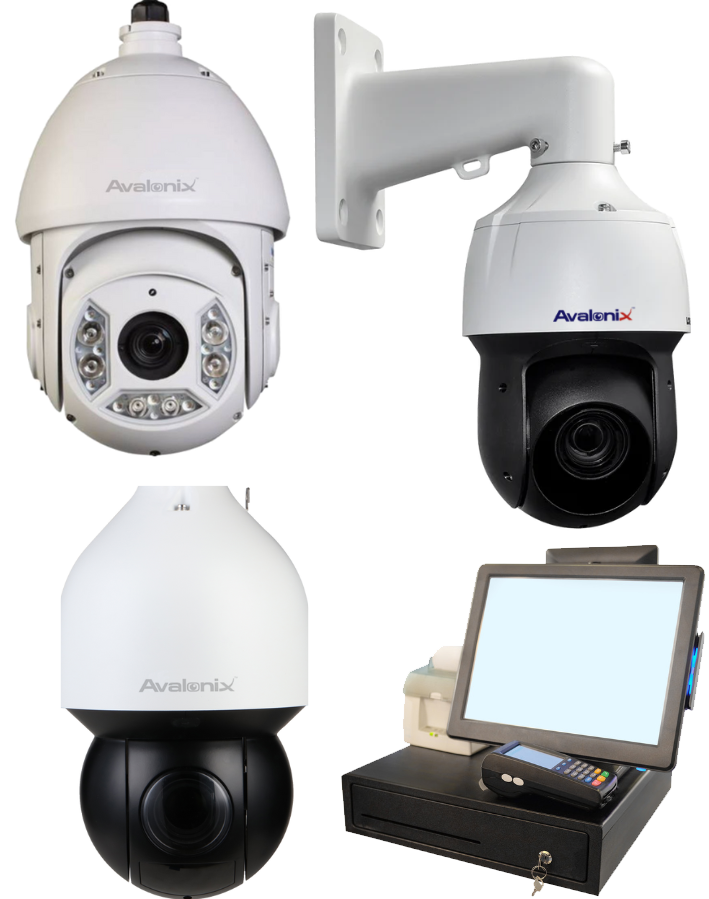
Power over Ethernet (PoE) technology has played a transformative role in the development and deployment of surveillance systems and the Internet of Things (IoT). The unique ability to transmit both power and data over the same Ethernet cable has revolutionized the way contractors, electricians, and homeowners approach wiring infrastructure in homes and businesses alike. The convenience, efficiency, and overall practicality of PoE technology have spurred an increase in the installation of Ethernet wiring (aka network wiring). With the rise of smart home equipment and a growing demand for interconnected devices such as security cameras and systems, PoE continues to provide immense value.
What is Power Over Ethernet (PoE)?
Power over Ethernet (PoE) is a networking technology used in wired local area networks (LANs) that delivers both electrical power and data to devices using the same Ethernet data cable. This means devices can receive both power and data through the same cable, eliminating the need for separate power adapters or power cords.
PoE was established as a standard in 2003 with the aim of powering and networking devices, such as wireless access points (APs) and voice over IP (VoIP) phones. Before the standardization of PoE, various telecom companies were employing their own proprietary PoE designs and devices.
How does PoE work?
PoE technology originates from devices called switches and injectors (also referred to as midspans). These devices convert AC power from a wall outlet into DC power. The DC power is then sent to devices, like PoE security cameras, through Ethernet cables.

Ethernet cables consist of eight wires grouped into four pairs, each pair being twisted together; because of this, they're referred to as "twisted pairs." PoE technology uses two of these four twisted pairs to transmit electrical current to the powered device.
PoE delivers a voltage range between 44 and 57 volts DC along these wire pairs, with 48 volts being the most common. This moderate voltage range is selected for its efficiency in transmitting power while also maintaining safety standards.
What devices use PoE?
In the past, Power over Ethernet was primarily designed to fit specific devices from individual manufacturers. Predominantly, it was used for wireless access points and business network phone systems before its standardization by the Institute of Electrical and Electronics Engineers (IEEE) in 2003.
After its standardization, the technology became more accessible to a wider range of manufacturers and companies, which led to its inclusion in a variety of electronic devices. However, for the first decade and a half, PoE could only deliver up to 15.4 watts of power. This restriction limited the types of electronics that could use the technology to low power devices.
In 2018, a new standard known as PoE+, or high-power PoE, arrived. This technology can deliver up to 30 watts of power. A further enhancement, called PoE++, can deliver even more power. PoE++ provides up to 60 or 100 watts, depending on the mode.
Below are some of the most common devices that use PoE, PoE+, and PoE++:
Low-wattage PoE devices
- Fixed lens and motorized zoom security cameras
- Small to mid-sized PTZ security cameras with 4X to 12X zoom
- Voice over IP phones
- Wireless Access Points
- Access control devices
- Intercoms
- LCD screens, and small computer monitors
- Small smart home appliances like alarm systems, thermostats, and speakers

High-wattage PoE+ and PoE++ devices
- Large PTZ security cameras with 16X, 25X or higher zoom
- High-gain Wireless Access Points
- Video conferencing equipment
- Large LED displays
- Video phone systems
- Remote computer terminals and thin clients
- Audio/Visual equipment
- Point of Sales(POS) systems

Benefits of PoE
Power over Ethernet is continuously changing the way electronics are designed, powered, and connected to computer networks in our homes and businesses. The rise of smart home technology owes a significant part of its popularity to advancements in PoE. Taking advantage of PoE has numerous benefits.
Affordable
One of the major advantages of PoE technology is its cost-effectiveness. Installing PoE infrastructure is less costly than traditional electrical work, and it also requires less maintenance. Moreover, using PoE to power devices over short distances is more efficient than installing individual power adapters for each device. This efficiency can translate to noticeable savings on the electric bill in residential homes and small offices over time.
Easy Install
Another aspect of using PoE is the convenience of running one network cable compared to thicker electrical or coaxial cables. Network wire is generally thinner and more flexible, making it easier to install. Plus, installation doesn't require any special skills or certifications. However, commercial buildings or new home construction may require permits or licenses in certain cities or counties.
Reliability
In recent years, there's been a push towards wireless and WiFi-enabled devices in the consumer market. This trend has led some people to prioritize the convenience of wireless technology over the reliability of wired equipment. While WiFi does serve a purpose for devices like laptops, smartphones, tablets, and smart TVs for leisure, it is usually not reliable enough for critical applications like security cameras, business phones, and point-of-sale systems. It's worth considering installing Ethernet network cables to leverage PoE technology for such crucial needs.
Design and Planning Freedom
With the ability to send power and data over a single cable, PoE provides a level of customization that's hard to match. Devices that use PoE don't require individual power adapters or need to be near power outlets. They can be placed anywhere it's possible to run an Ethernet cable. This flexibility in design also contributes to cost savings, as it eliminates the need to hire electricians to run expensive copper power wires and install outlets.
Intelligent Devices
PoE devices are usually intelligent devices. For example, among security cameras, when compared to analog security cameras, PoE cameras are usually smart security cameras that have a CPU and provide intelligent event detection. Intelligent event detection may include smart motion detection with filtering for human bodies and vehicles.
Drawbacks of PoE
As with everything in life, Power over Ethernet (PoE) isn't perfect. While PoE technology has fundamentally changed how networking and power for low-voltage electronics are done, there are certain aspects to keep in mind when learning about PoE.
Compatibility - Active vs. Passive
One area of concern is compatibility, particularly between active and passive systems. Despite PoE being an IEEE standard, there can be compatibility issues that arise when installing PoE devices. Active PoE devices, for instance, are capable of negotiating with the PoE switch or PoE power injector, which signals the power supply about the voltage and amperage needed by the end device. Passive PoE switches or injectors, however, doesn't do any negotiation and send raw, unregulated power to end devices. Unnegotiated power will damage devices that require lower voltage or amperage. Our article "Difference Between Active vs. Passive PoE" explores this topic in detail, especially concerning IP PoE cameras.
Distance Limitations
It would be wonderful if PoE were a fix-all for providing power and data to devices at any distance, but unfortunately, it does have limitations. Every Ethernet cable, PoE or not, has a limit of 328 feet, or 100 meters, which is where data loss starts to happen. PoE is not immune to voltage drops, either, and that is also factored into the limit. On the other hand, there are passive PoE extenders that don’t require an external power supply and can extend data to another 328 ft (100 m) and, with a second extender, up to 984 ft (300 m). Last but not least, some manufacturers have come up with new technologies called "extended PoE" or "ePoE" that do not require extenders.
Outages
One of the biggest issues with using PoE is that most devices connect to a PoE switch which has multiple ports. This means that all of the devices in a system are usually connected to the same switch or switches that are in a single utility closet or server room. If a switch fails, then all of the devices that were connected to it will shut off. While it’s easy to replace the switch, a spare switch needs to be readily available, and someone needs to be there to install it. If you don't plan ahead, a broken switch or power outage can be disastrous for systems that use PoE power.

